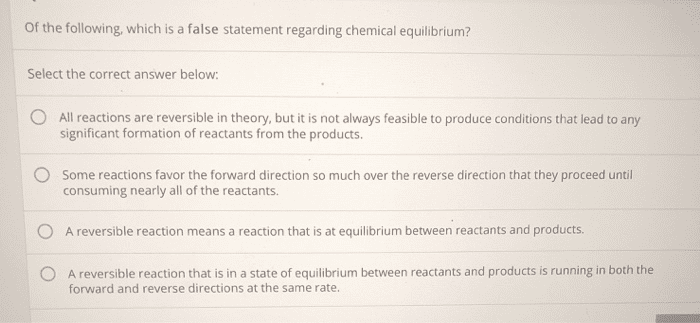CHEM-C 117 Lecture Notes - Lecture 26: Equilibrium Point, Equilibrium Constant, Dynamic Equilibrium
Document Summary
Chapter 14: chemical equilibrium: reversible: a reaction that can proceed in the forward and reverse directions. Most chemical reactions are at least theoretically reversible, many times where reversibility is so small it can be ignored: dynamic equilibrium: the condition in which rate of forward reaction equals the rate of the reverse reaction. Forward and reverse reactions still occurring, but at the same rate. Once at equilibrium, concentrations no longer change. Equilibrium can be reached before products form or after: equilibrium constant: (k) the ratio at equilibrium of concentrations of products raised to their stoichiometric coefficients divided by the concentrations of the reactants raised to their stoichiometric coefficients. If equilibrium constant for reaction is large, equilibrium point of rxn is @far right (aka: concentration of products is large, concentration of reactants is small) Q relative to k is a measure of the progress of the reaction toward equilibrium. At equilibrium, reaction quotient is equal to the equilibrium constant.


